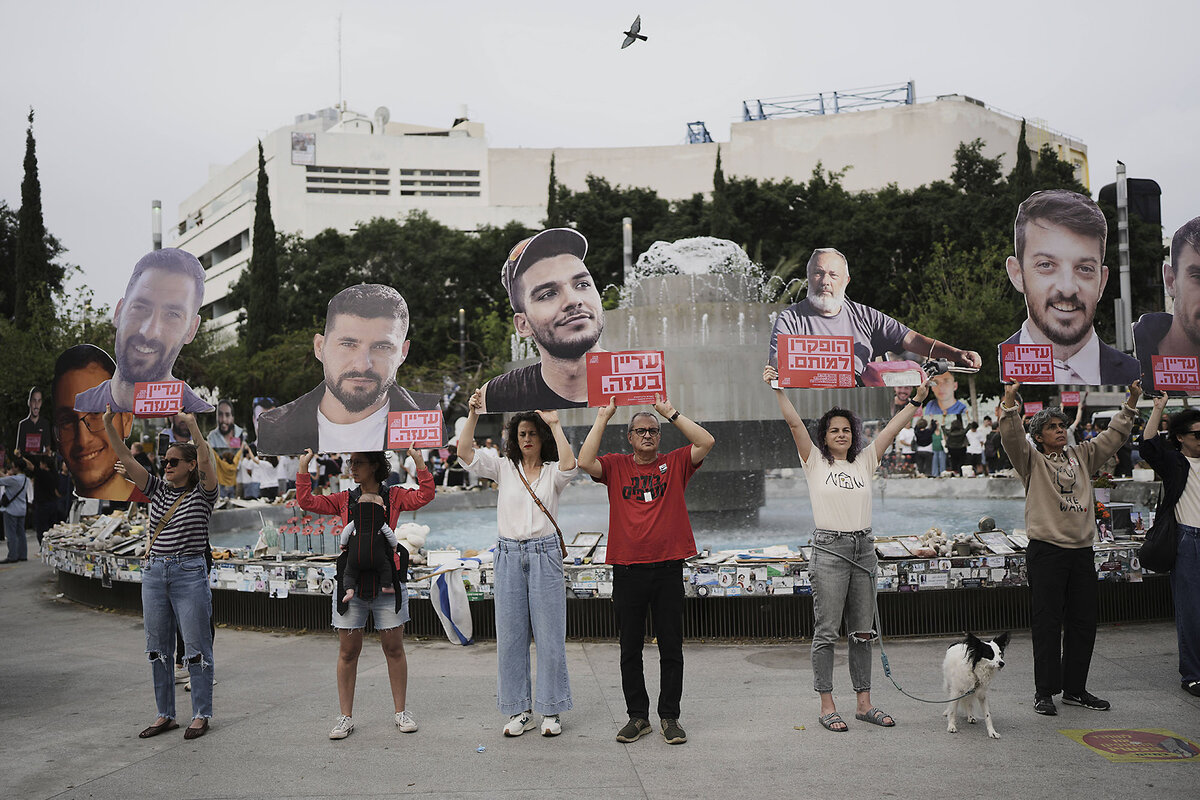Trump’s ‘quick fix’ approach to diplomacy slow to yield results
Loading...
| London
It was a tantalizing promise, delivered with Donald Trump’s trademark panache: As dealmaker in chief, he would quickly end world conflicts that had defied his predecessors and their nattily dressed legions of career diplomats.
Nearly 100 days into his second term as president, though, he is facing serious complications as he tries to unravel three major crises: Russia’s invasion of Ukraine, the war in Gaza, and Iran’s accelerating progress toward nuclear weapons.
The United States president is showing signs of mounting frustration – especially over the Russia-Ukraine war, which he once pledged to end within 24 hours. This week, he has publicly lashed out against both sides: scolding Ukraine’s leader for rejecting a key element of a U.S. peace plan, and admonishing Russia for a missile-and-drone attack on the Ukrainian capital, Kyiv.
Why We Wrote This
President Donald Trump set himself ambitious targets and timelines to negotiate peace in Ukraine and Gaza. The complexities of those conflicts are confounding his hopes. Will he stay the course even if there are no prospects for early deals?
That doesn’t necessarily mean he will abandon his efforts.
But one thing is now clear. The New York real estate dealmaking tools that he and his main diplomatic point man, Steve Witkoff, have mastered are unlikely to be enough.
They will also need to draw on the lessons of old-style diplomacy: that peacemaking is hard, that even the weakest parties have red lines that can block a deal, that progress requires painstaking attention to detail. And patience.
The shortcomings of the “quick fix” approach have been clear this week, as talks on Ukraine, Gaza, and Iran entered a potentially critical stage.
Mr. Trump’s vision of a rapid end to the Ukraine war rested on his assumptions that, after suffering hundreds of thousands of casualties, both sides needed to end hostilities, and that Russia’s dominant size and power meant he would be able to convince Ukraine to give Russian President Vladimir Putin most, if not all, of what he wants.
The abrupt cancellation Wednesday of a London trip that Mr. Witkoff and Secretary of State Marco Rubio had planned – to meet officials from Ukraine and its European allies – was the latest sign that ending the conflict is proving far more complex.
Mr. Putin has yet to accept a 30-day ceasefire proposed by Washington and agreed to by Ukraine last month.
And while Mr. Trump’s threat to end U.S. support for Ukraine has weakened President Volodymyr Zelenskyy, he still has red lines of his own. One of them is his refusal to recognize Russia’s unilateral annexation of Crimea in 2014 – a step that Mr. Trump is demanding of him, and that European leaders also oppose.
The war in Gaza is presenting Mr. Trump with an equally complex challenge.
He might well have steered clear of it altogether, but for an early success. The U.S. president helped secure a ceasefire involving the release of some Israelis held hostage by Hamas, in exchange for Palestinians imprisoned in Israel.
Mr. Trump’s vision for a wider Gaza agreement has echoes of his approach to Ukraine: a belief that both sides, especially the Palestinians, need the violence to end, and that a deal giving the overwhelmingly stronger party, Israel, most of what it wants should be possible.
But it has become clear neither of the parties is eager to end the war. Israeli Prime Minister Benjamin Netanyahu fears he would risk the defection of far-right Cabinet partners and the collapse of his government. Hamas knows that it would be excluded from a postwar Gaza government.
And however weakened Palestinians may be, they, too, have a red line – backed by leaders across the Arab world. They reject the prospect that Israel might reoccupy the Gaza Strip, possibly to facilitate Mr. Trump’s suggestion that the area be converted into a high-end seaside resort.
Iran’s nuclear ambitions could present the least complicated challenge. It is a matter of one-on-one negotiations, a process launched by Mr. Trump in a letter last month to Iran’s supreme leader, Ayatollah Ali Khamenei.
The broad terms of the deal would require Iran to abandon its nuclear weapons ambitions in return for an end to sanctions and for help with its economy.
The rider: a 60-day deadline, due to expire next week, and the threat of a “terrible” military strike if Iran turns down the deal.
Mr. Witkoff has held two rounds of talks with Iranian Foreign Minister Abbas Araghchi, mediated by the Gulf Arab state of Oman, and is due to have a third this Saturday.
But as experts from both sides huddled this week, they found – as diplomats in the past have so often found – that the devil is in the details. In this case, differences have arisen over the exact level to which Iran might be able to enrich uranium as part of a nuclear energy program.
The overriding question on all three diplomatic fronts is how long Mr. Trump will stay engaged if there is no prospect of an early deal. Will he, instead, decide to “take a pass,” as he suggested he might last week during a logjam in the Ukraine talks?
That was a key weapon in his arsenal as a real estate negotiator. In his words, you had to “know when to walk away from the table.”
But back then, “walking away” meant – at worst – losing a pile of bricks and mortar.
“Walking away” from talks to end the Ukraine and Gaza wars, or to stop Iran from going nuclear, would have life-and-death consequences.








